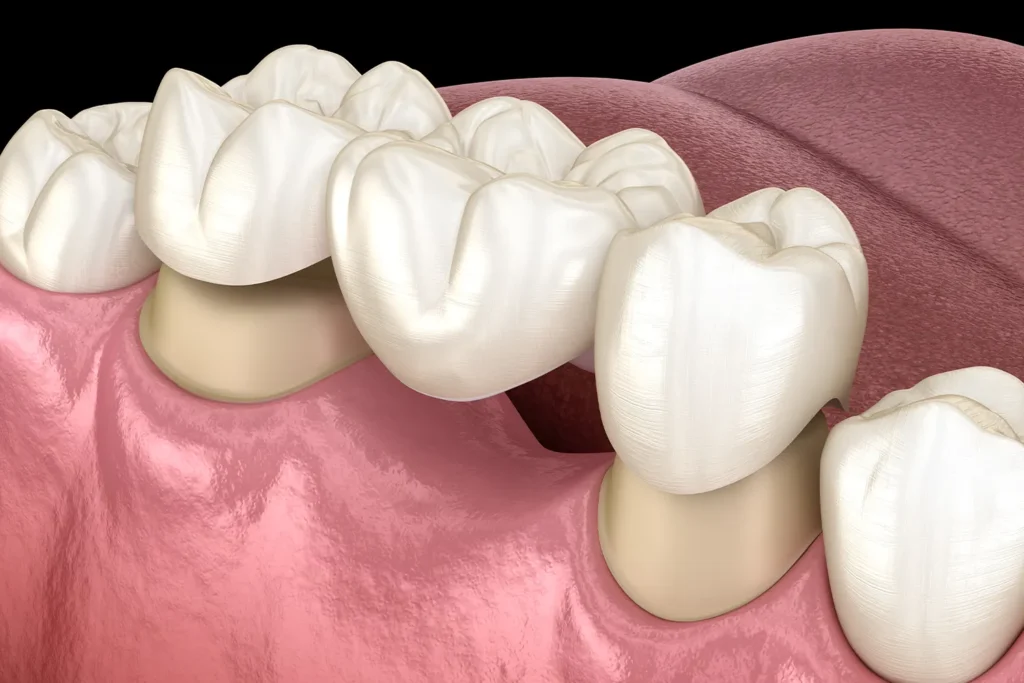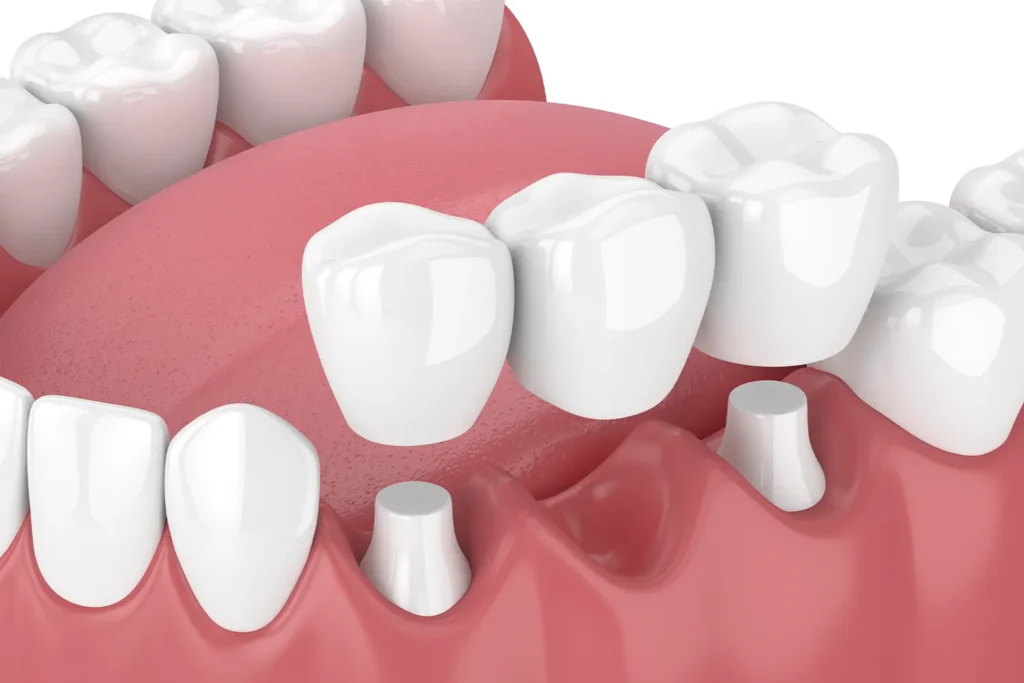Dental Bridges
Dental bridges are a popular restorative dental treatment designed to replace one or more missing teeth, effectively bridging the gap left by the absent teeth.
What are Dental Bridges?
Dental bridges involve anchoring artificial teeth, known as pontics, to the adjacent natural teeth or dental implants, which serve as supports or abutments. Dental bridges not only restore the aesthetic appearance of your smile but also improve functionality, allowing you to chew and speak properly. They help maintain the shape of your face and prevent remaining teeth from shifting out of position. At Wisconsin Family Dental in Cottage Grove, Dr. Natalie Behling offers expert care in fitting dental bridges, ensuring they are both functional and aesthetically pleasing.

The Dental Bridges Treatment Process
The process of getting dental bridges typically involves a few visits to the dentist. Initially, the abutment teeth are prepared, followed by impressions to create a custom bridge. Temporary bridges may be placed to protect the exposed teeth and gums. Once the permanent bridge is ready, it is fitted and adjusted for comfort and functionality, ensuring a seamless and natural look.

Consultation and Examination
The journey to obtaining a dental bridge begins with a thorough consultation and examination with Dr. Natalie Behling at Wisconsin Family Dental. During this initial visit, Dr. Behling will evaluate your oral health, discuss your specific needs, and determine if a dental bridge is the most suitable option for you. This step involves taking X-rays and impressions of your teeth to assess the health of the adjacent teeth and the gap that needs to be filled. Dr. Behling will also discuss the types of materials available for your bridge, such as porcelain, ceramic, or metal alloys, ensuring you are well-informed and comfortable with your treatment plan.

Preparation of Abutment Teeth
Once the treatment plan is established, the next step involves preparing the abutment teeth that will support the bridge. This crucial phase requires the careful reshaping of these teeth by removing a portion of enamel to make room for the crown that will be placed over them. Dr. Behling will then take impressions of your teeth, which serve as a model for crafting the custom bridge, pontic, and crowns. During this time, you may be fitted with a temporary bridge to protect the exposed teeth and gums while your permanent bridge is being made. This ensures comfort and functionality until your next appointment.
Fitting and Placement of the Bridge
The final step in the dental bridge process is the fitting and placement of your custom bridge. During this visit, Dr. Behling will remove the temporary bridge and carefully fit the new bridge, checking for proper fit and bite alignment. Adjustments may be made to ensure the bridge feels comfortable and functions seamlessly. Once satisfied with the fit, Dr. Behling will cement the bridge into place, securing it to the abutment teeth or implants. This step is crucial in ensuring the bridge looks natural and matches the surrounding teeth in color and shape, providing a confident and complete smile.

The Benefits Of Dental Bridges
Dental bridges offer numerous benefits, making them a popular choice for those looking to restore their smile. They not only enhance the aesthetic appearance by filling gaps but also improve oral functionality, allowing for better chewing and speech. Additionally, dental bridges help maintain facial structure and prevent remaining teeth from shifting, promoting overall oral health.
Restored Functionality
One of the primary benefits of dental bridges is the restoration of functionality. Missing teeth can make everyday activities like eating and speaking a challenge. Dental bridges fill these gaps, allowing you to chew your food more effectively and speak clearly without hesitation. This restoration of function can significantly improve your quality of life, allowing you to enjoy your favorite foods and engage in conversations with confidence. Dr. Behling ensures that each bridge is custom-fitted to your mouth, providing comfort and ease of use.
Enhanced Aesthetic Appeal
Dental bridges are designed to blend seamlessly with your natural teeth, providing an enhanced aesthetic appeal. By filling in the gaps left by missing teeth, bridges help restore your smile to its full potential. This improvement in appearance can boost your self-esteem and confidence, allowing you to smile freely without feeling self-conscious. At Wisconsin Family Dental, Dr. Behling takes great care to match the color, shape, and size of the bridge to your existing teeth, ensuring a natural and harmonious look.
Prevention of Teeth Shifting
Another significant advantage of dental bridges is their role in preventing the shifting of remaining teeth. When a tooth is lost, the adjacent teeth may begin to move into the empty space, leading to misalignment and bite issues. This can result in further dental complications and discomfort. Dental bridges act as a stabilizing force, keeping your teeth in their proper positions and maintaining the alignment of your bite. This prevention of shifting is crucial for long-term oral health, as it helps avoid the need for more extensive dental treatments in the future.
